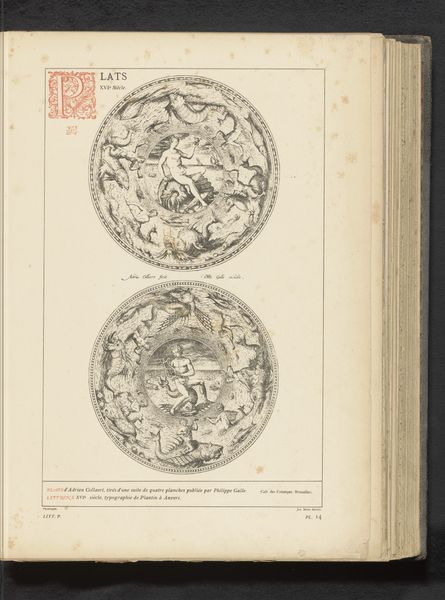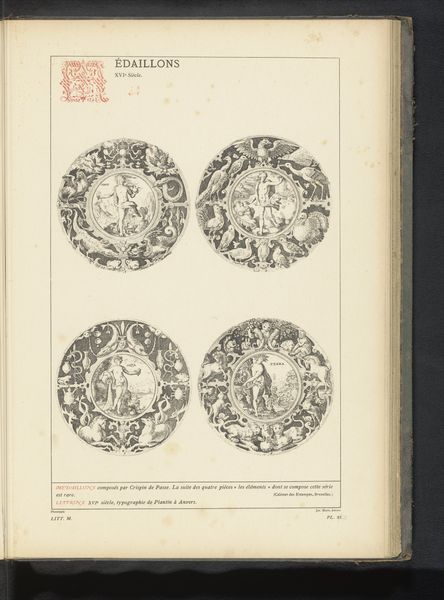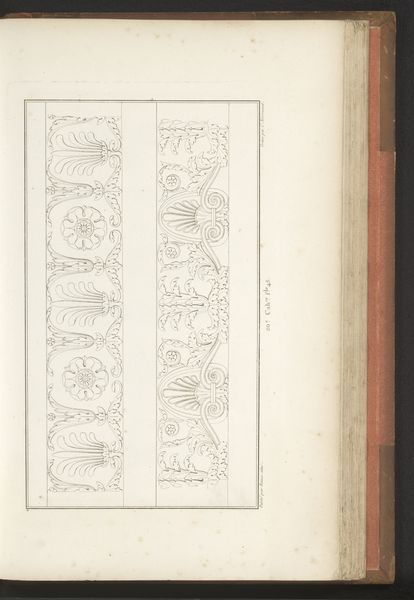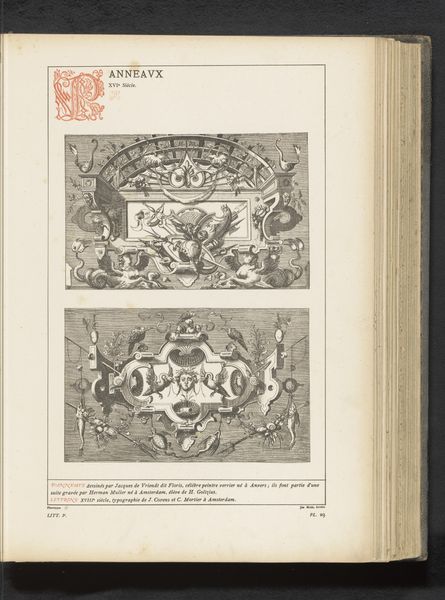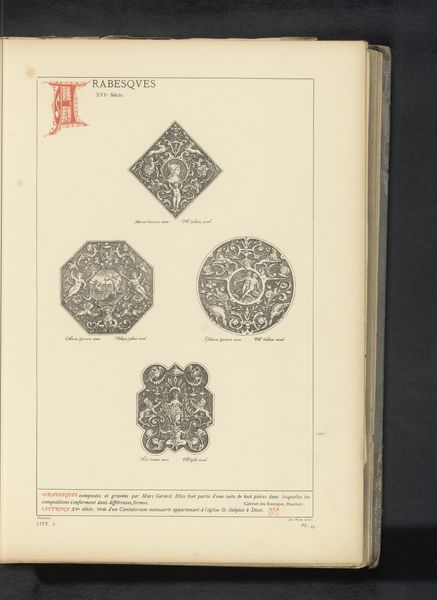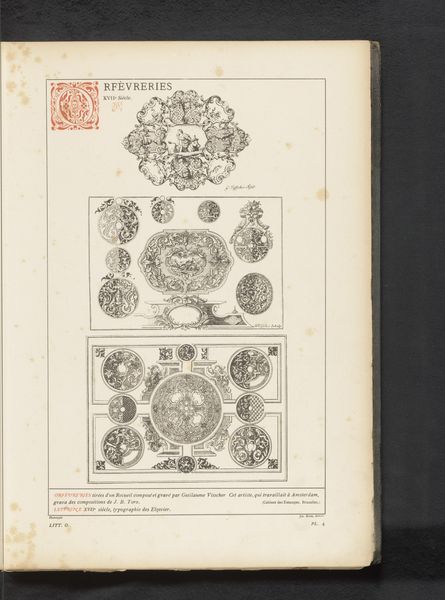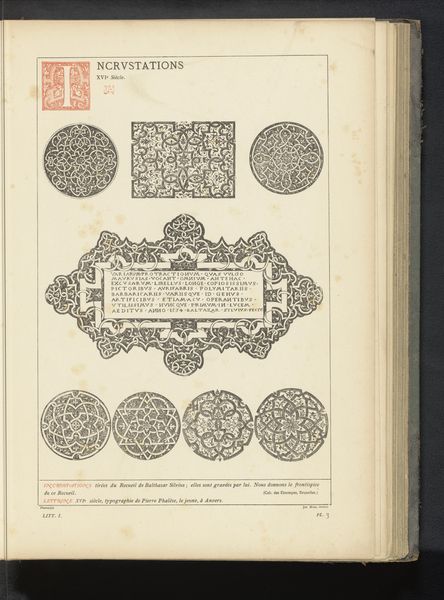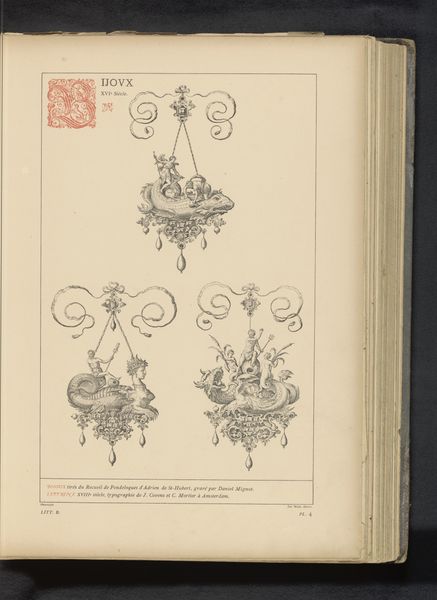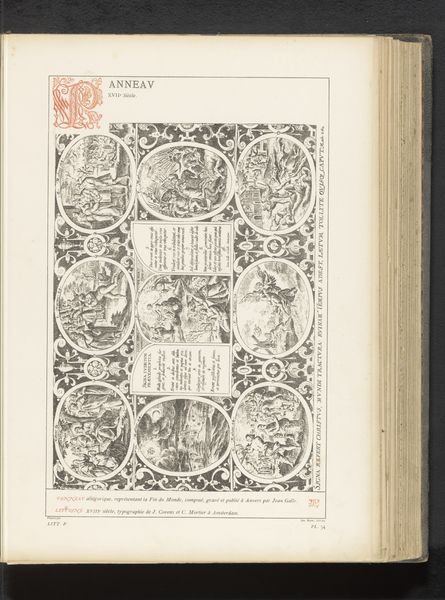
Reproductie van een prent van twee schotels, gedecoreerd met vissen en vogels before 1881
0:00
0:00
drawing, graphic-art, ornament, print, etching, paper, engraving
#
drawing
#
graphic-art
#
ornament
# print
#
etching
#
bird
#
paper texture
#
paper
#
11_renaissance
#
engraving
Dimensions: height 345 mm, width 234 mm
Copyright: Rijks Museum: Open Domain
Curator: This print, predating 1881, showcases a reproduction of two ornate dishes, meticulously engraved and etched. One depicts swimming fish while the other features fantastical birds. Editor: My first impression is of meticulous craftsmanship. The detail in those swirling patterns and animal figures is astonishing, a testament to the engraver's skill and the period's value on handcrafted luxury items. There’s a stiffness that reveals its origin in reproducible printmaking. Curator: Absolutely. Plates such as these often served not only a utilitarian purpose for dining but also a symbolic one as a reflection of wealth and status. During the Renaissance, the ability to commission and display such objects was a way to signal belonging to the dominant aristocratic and mercantile classes. Editor: Yes, and what about the chosen imagery? Fish, commonly associated with abundance and perhaps, Christian symbolism. Birds could reference freedom or transcendence, depending on their specific identity. These plates aren't merely decorative, but carry ideological weight as well. How might we interpret that message for contemporary audiences now? Are these ideals relevant today? Curator: A key point, that we need to view such objects with a critical eye. Were these motifs, originally conceived to communicate wealth and status, reinforcing existing hierarchies and potentially justifying social inequalities? It makes me wonder how items on display were impacting people in real life back then. Editor: I agree, and by understanding their role, we can begin to critically assess how these patterns and the very act of producing them affect modern production of artwork and its impact in a sociopolitical context. Curator: Reflecting on this artwork reminds us of the rich symbolism embedded in decorative arts and how everyday objects contribute to constructing our world, historically and now. Editor: Right. Hopefully, discussing these beautiful plates has given our listeners food for thought about how objects reflect cultural values and potentially serve as expressions of empowerment, whether intentionally or not.
Comments
No comments
Be the first to comment and join the conversation on the ultimate creative platform.
